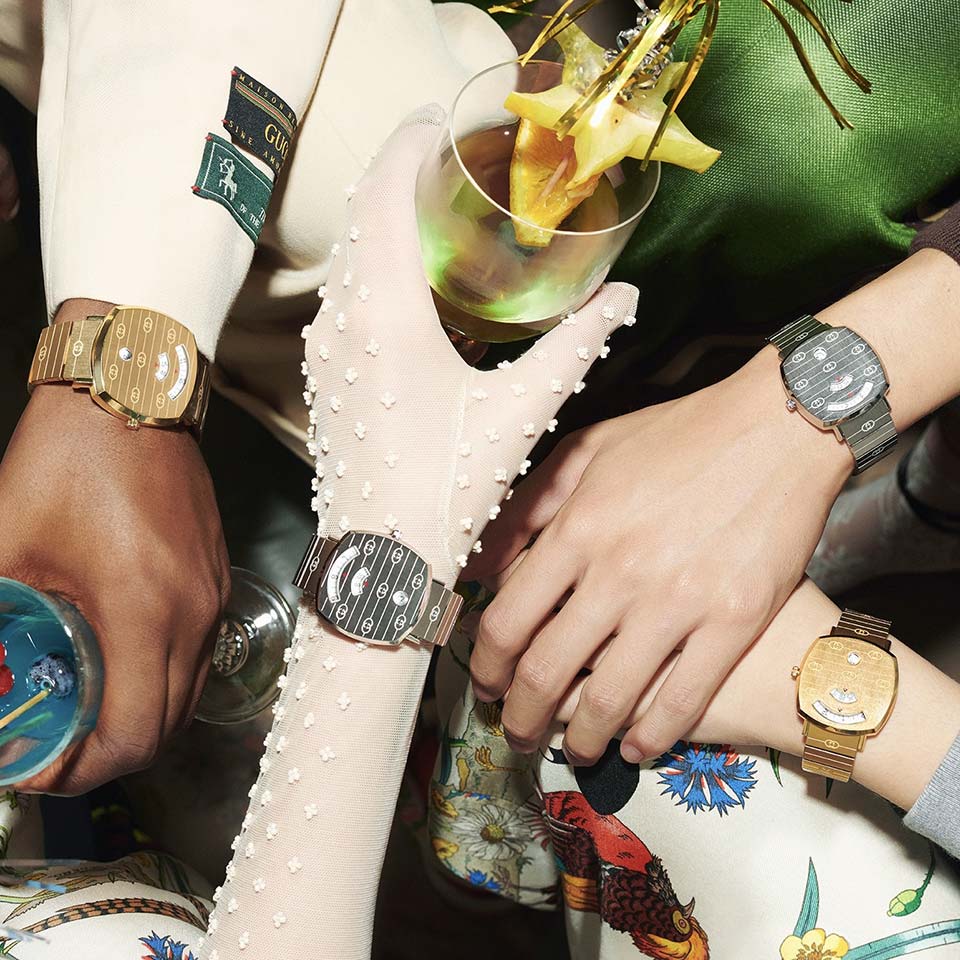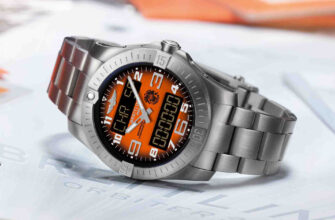What makes a watch a watch? That's right, the dial and hands! It is the hands, this pair of different-sized "sticks", that makes the watch a watch, performing the main function of showing the current time. Over the centuries of world watchmaking, not a single worthy replacement for the hands has been offered, although attempts have been made repeatedly.
Aperture indication, which is considered to be the most interesting alternative concept, is, in fact, just a version of the pointer indication, exactly the opposite: with fixed “arrow” windows and movable disks. This method of indicating the time was found even in pocket watches. In the 60s of the last century, "digital indication" regained its former popularity already in wristwatches - and still the ability to combine design and technology attracts the attention of watchmakers who offer us interesting items.
In pocket watches, the aperture, also digital, indication was due to practical considerations: the dial was thus stronger (the watch glass as we know it today has not yet been invented). In wrist "digital" watches of the 1970s and beyond, this look was shaped by the demands of the market - buyers wanted watches that were unusual and fashionable. In the 21st century, a return to digital display responds to growing concerns about future generations. Judge for yourself.
A few years ago, almost all British media reacted to the message that the country's schools began replacing analog clocks with digital ones, and first of all in the rooms where the exams for the certificate of secondary education are held, since schoolchildren are not able to understand what time it is, and it adds stress to already tense teenagers. The reaction of the media was supportive - why bother tormenting 13-year-olds in vain, because they are used to finding out what time it is on their smartphones ... American colleagues supported the initiative of the islanders, noting that prescriptions, perhaps, should not be canceled yet. But that's for now.
Obviously, with an eye on the information received, and concerned about the prospect of building long-term relationships with today's teenagers (promising customers interested in buying mechanical watches), manufacturing companies decided to give the problem a minute of their attention. After all, who would buy a watch when they couldn't tell what time it was? Down with arrows!
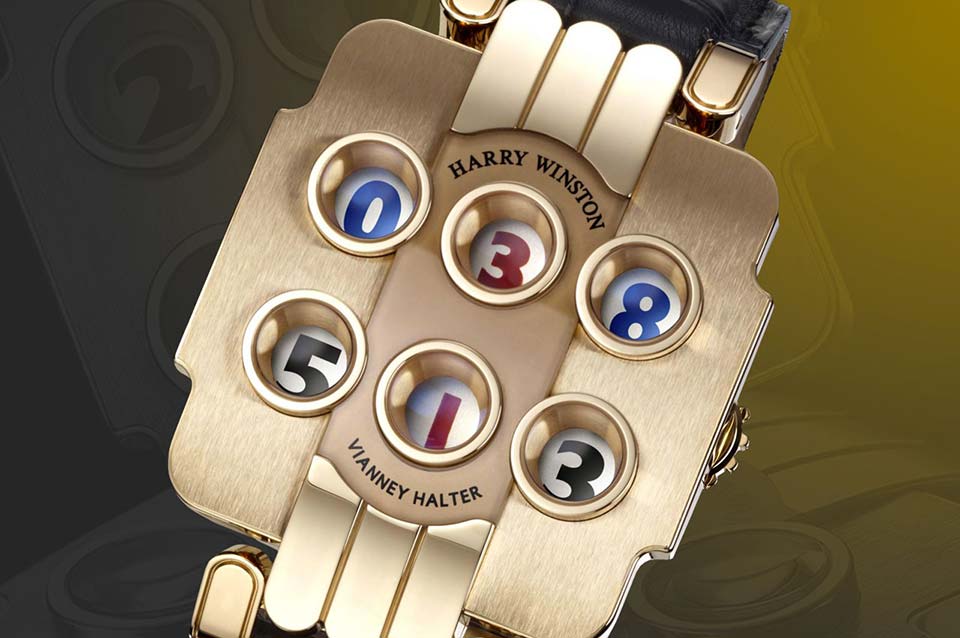
Over the past 15-20 years, several manufacturers have come up with truly crazy ideas that set an unexpected vector for the development of the entire industry. But before moving on to the analysis of the "arrowless" modernity, let's make a short digression into the past and review the harbingers of a trend (not the one that English schoolchildren set, but about the rejection of arrows).
More than 20 years ago, a “six-eyed” monster called Opus 3 was born. This unique creation of an independent watchmaker, a member of the Academy of Independent Watchmakers (AHCI) Vyanney Alter had a difficult fate, about which it is time to write a book and make a movie. Do not rush to jump to conclusions about the seeming triviality of Opus 3: Alter claimed that in terms of complexity, his movement would give a hundred points ahead of the tourbillon, perpetual calendar and repeater combined, and this is not bravado.
Time in Opus 3 is shown in six windows by ten rotating discs (six of them are doubled, and one - counting the last five seconds of each minute in the upper middle window - is more like a half-disk in shape), interacting with each other through an ingenious wheel-lever system. The concept was in the stage of final fine-tuning for a very long time - at the last stage, serious problems arose, in particular, with this second indicator.
The initial estimate laid down in the project by Alter and Maximilian Busser, who was then president of Harry Winston Rare Timepieces, was exceeded several times, the project ended up taking almost 8 years, but what a result!
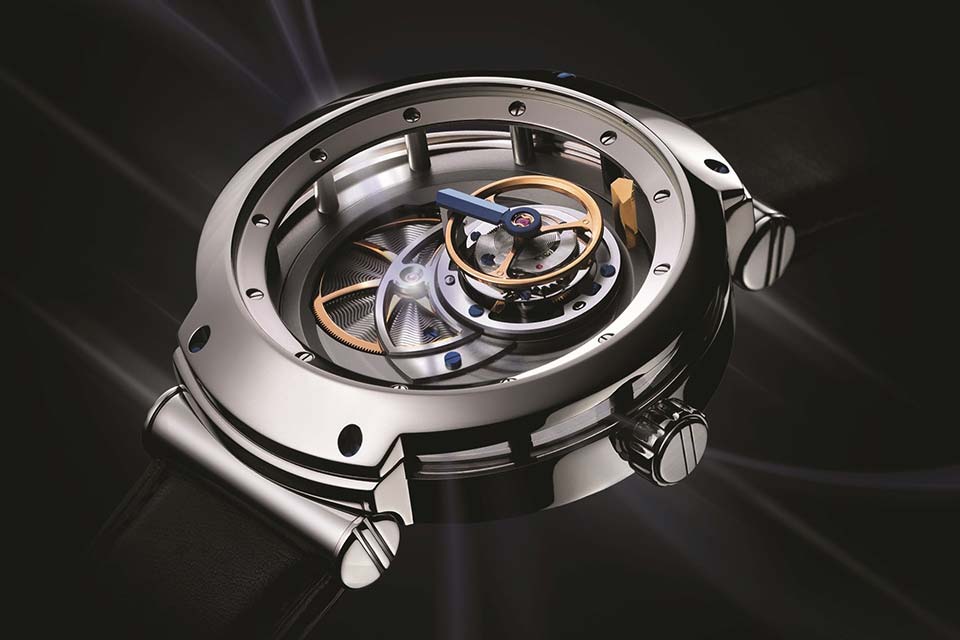
Another active "academician", Bernard Lederer, is considered an outstanding specialist in non-traditional indications. His "floating" tourbillon on the dial is without a doubt one of the most beautiful pieces of haute horlogerie. One of his most beautiful creations is the Blu Majesty Tourbillon MT3, a model introduced back in 2007. The Blu Majesty Tourbillon MT3 is a kind of tourbillon “matryoshka”: a semi-fixed minute tourbillon, describing circles on the dial, is placed inside the hour tourbillon, which, in turn, is arranged in a huge 12-hour tourbillon. The hour hand, as you might guess, is fixed on the smallest carriage.
All this splendor is perfectly visible, because thanks to the described design feature, the MT3 does not have a bulky wheel train, and the barrels are hidden under the main plate, making room for waltzing tourbillon lace. Of course, it would be unwise to hide such beauty under the dial, so it is not here. There is only a case, the upper and lower parts of which are tied with 12 rods, which also serve as hour markers. A few words about the “semi-fixed” tourbillon. This type is rarely used because it requires the manufacturer to have surgical precision and expert skills. But it differs in a much lighter carriage compared to other analogues and, accordingly, is less energy-consuming.
Now let's move on from this short retrospective to watches that in recent decades have demonstrated a fundamentally new approach to indicating time parameters and a clear trend towards the rejection of hands and their variations.
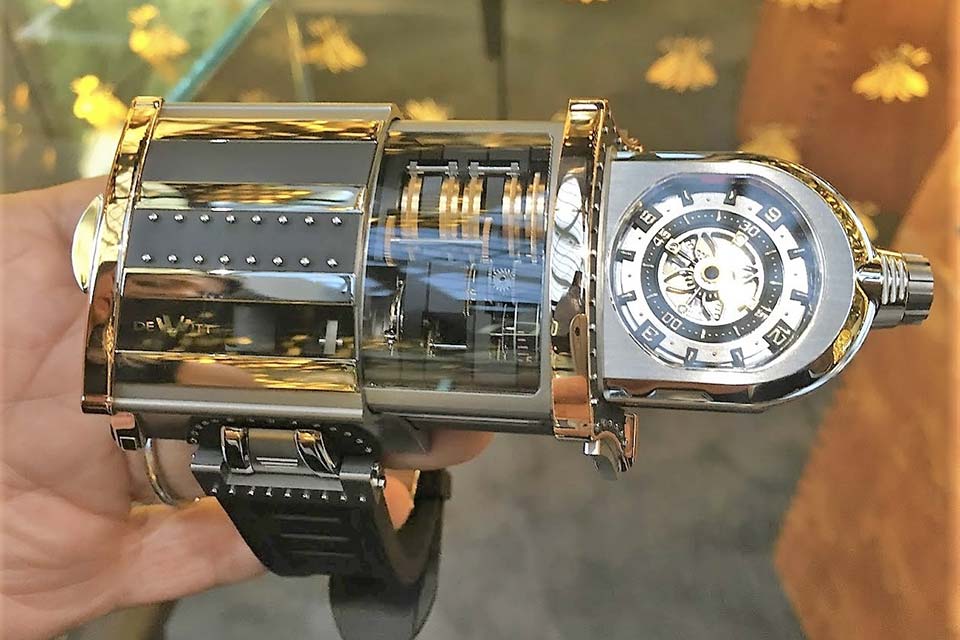
If you try to give a short description of the De Witt WX-1 model, then the most successful, perhaps, will be the phrase "box with a secret." Designed by brand owner Jérôme de Witt and architect Jean-Michel Wilmotte, this watch will look much better on a coffee table or mantelpiece than on your wrist.
The dimensions of the case, made of titanium, aluminum and rose gold, are astounding: 72,51 x 48,64 x 21,17 mm with, nevertheless, a rather modest weight of 191 g. Of these, the movement itself (vertical type) accounts for only 27 g, since all its parts are made of an ultra-light alloy of aluminum and lithium. The mechanism can be examined in detail: it leaves the case like the mentioned “box”, in which five barrels with a total power reserve of 21 days are lined up in a neat row.
They are wound manually or by means of the device included in the kit through one of the two holes in the left side of the case - the tourbillon carriage view window is hidden in the second hole. Learning how to quickly compare time using WX-1 is quite difficult, not an easy task, including for adults, and not just schoolchildren.
The dial, placed outside the case on a special console, consists of two disk pointers and a fixed mark at the 12 o'clock position. The most interesting thing is that the minute disc rotates clockwise, and the hour disc rotates counterclockwise, which makes it somewhat difficult to get used to. But, as noted above, this item is not intended for everyday use, so its functional pros and cons do not matter at all.

The head of Urwerk, Felix Baumgartner, was one of the first of our contemporaries to embark on incessant experimentation with non-traditional pointers. His "satellite" system at one time made a lot of noise, inspiring the exploits of many watchmakers and made a significant contribution to the formation of the "new wave" of watchmaking art. Five years ago, in the UR-111C model, the brand offered us to evaluate the rotational method of displaying time, abandoning the satellite display system that has become the hallmark of the brand (in the UR CC1 watch, a linear indication was used by means of a rotating cylinder).
The UR-111C has two conical displays in their “front” – the “jumping” hour on the left and the “running” minutes on the right – and a unique spiral minute display in between, with a retrograde function. As if that weren't enough, there is a jumping stopwatch at the top of the case that uses optical fibers to project numbers onto the surface of the sapphire crystal.
In addition to the task of understanding and getting used to reading the time in an unusual format for homo sapiens, Urwerk introduced a new way of interacting with the clock in the UR-111C. Please note that the watch does not have a crown in its traditional "design" - instead, there are a couple of devices for winding and pointer correction. For winding, you use a cylindrical roller that is mounted on the top of the case, just below the seconds display.
To set the correct time, you will have to use the lever located on the right side of the case - it allows you to move the indicators forward or backward, as we understood.
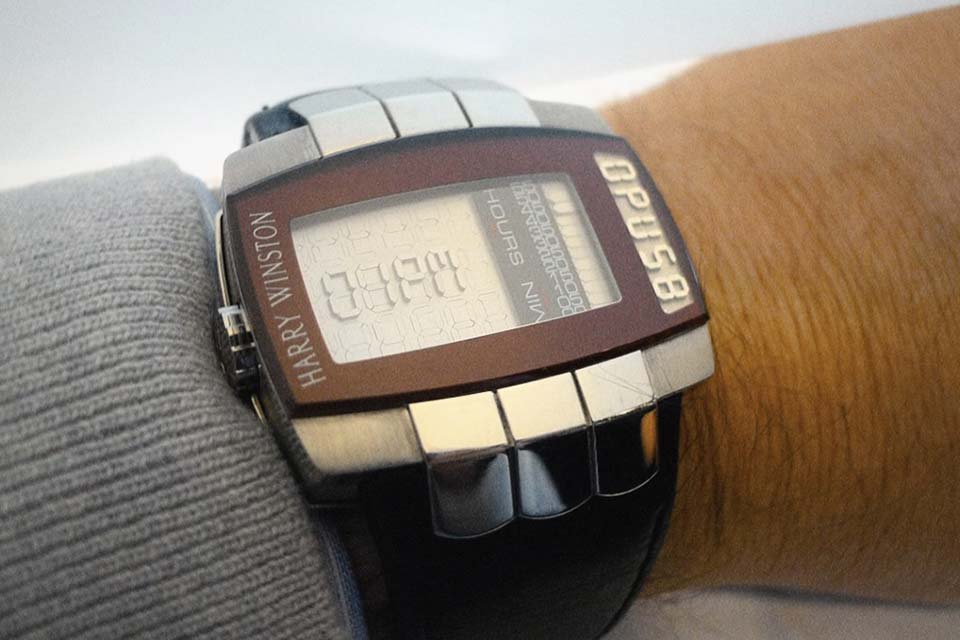
It is impossible not to recall the Harry Winston Opus 8 watch, designed by a close-knit creative team led by talented engineer Frederic Garino. At the heart of the original idea is the well-known toy "needle cloth", which reproduces the outlines of the objects applied to it. Only instead of needle-rods, Opus 8 uses movable elements that exactly repeat the electronic segments of the liquid crystal display in shape.
Most of the time, the dial-display is smooth and featureless, however, as soon as you press the button on the right sidewall, a group of mechanical segments emerge from it, forming the figure of the current hour. Minutes are shown on a linear scale on the right, which works in the same way. The data is displayed for five seconds, after which the pointers move back down.
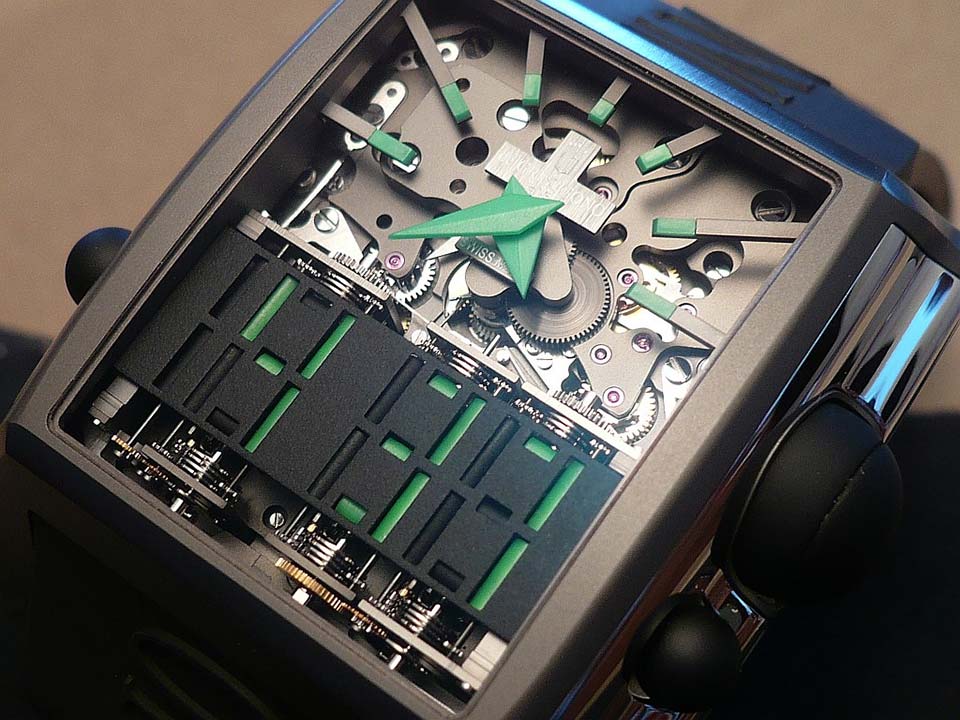
It should be noted that all the watches mentioned above were produced in limited editions and were fabulously expensive. For Meccanico dG, the previously popular de Grisogono company was asked, for example, for half a million dollars. The Meccanico dG watch, which became one of the sensations of 2018, was born from looking at the information board at one of the New York railway stations by the then head of de Grisogono, Fawaz Gruosi.
Gruosi shared his idea with his watchmakers, who concluded that it was impossible to reproduce it in a watch, but, mindful of the chef’s dislike for such answers, they tensed up and made a wrist version of a mechanical scoreboard with 23 rotating segment rods. Each of the rods is painted vertically in two colors: black and, depending on the version, gold or green. The first "turns off" the segment, the second - "turns on"; everything is extremely clear and understandable. Just in case, the digital dial is duplicated by an arrow dial, which, if necessary, can be used to show the time of the second time zone. Due to the abundance of moving parts (and the entire caliber DG 042 consists of 651 parts), the movement turned out to be quite energy-intensive, with a power reserve of only about 35 hours.
Probably, this review should also include the Sequential One watches from MCT (Manufacture Contemporaine du Temps) and A.Lange & Sohne Zeitwerk, Vacheron Constantin of the Masks collection, the little-known 4N and Devon, I hope the curious themselves will look for information about these “non-traditional » watch online.
In conclusion, we will introduce another funny model. From a formal point of view, this Maurice Lacroix Aikon Mercury watch should not have been included in our selection. However… however it is how to look. Literally. If the watch worn on the wrist is turned with the dial towards the wearer's eyes, both hands show the current time in the traditional way, but as soon as the hand is turned so that the case is in a position close to horizontal, the hands will go crazy and join at the 12 o'clock mark, refusing to show what time it is. Some sly one can use this to gain extra time on the exam - "look, professor, it's only 12, I still have half an hour!"

If you figured out how the watches from our article show time, then you definitely deserve encouragement and you can treat yourself to buying - for example, Gucci watches from the Grip collection. The option with apertures and rotating disks is very relevant, and you can retell this article to all the curious, reinforcing your choice with the acquired knowledge.
